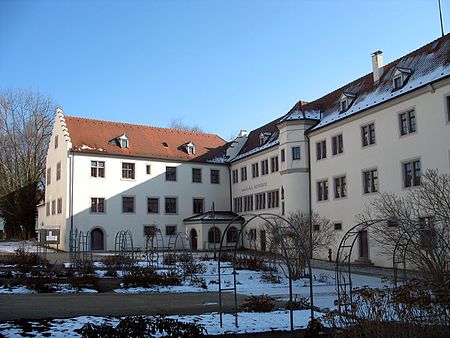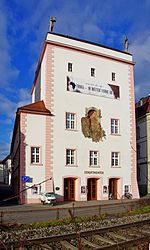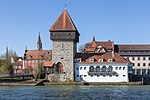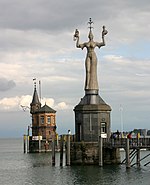Petershausen Abbey
10th-century establishments in Germany983 establishmentsBenedictine monasteries in GermanyChristian monasteries established in the 10th centuryImperial abbeys ... and 2 more
Imperial abbeys disestablished in 1802–03Monasteries in Baden-Württemberg

Petershausen Abbey (Kloster, Reichskloster, Reichsstift or Reichsabtei Petershausen) was a Benedictine imperial abbey at Petershausen, now a district of Konstanz in Baden-Württemberg, Germany.
Excerpt from the Wikipedia article Petershausen Abbey (License: CC BY-SA 3.0, Authors, Images).Petershausen Abbey
Spanierstraße, Verwaltungsgemeinschaft Konstanz
Geographical coordinates (GPS) Address Nearby Places Show on map
Geographical coordinates (GPS)
| Latitude | Longitude |
|---|---|
| N 47.668055555556 ° | E 9.1786111111111 ° |
Address
Spanierstraße
78467 Verwaltungsgemeinschaft Konstanz, Konstanz-Petershausen-West
Baden-Württemberg, Germany
Open on Google Maps








